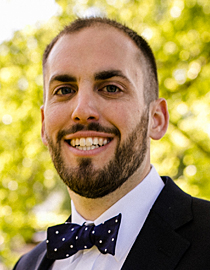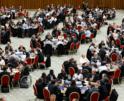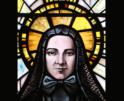
Culture
Their intentions were to burn down the Catholic Church, carry Father O'Callaghan out of town on a rail, and banish all Irishmen.

Lester
In the spring of 1838, Father Jeremiah O'Callaghan wrote to Bishop Fenwick from Burlington, Vermont, informing him of the destruction of St. Mary's Church and the investigation that followed.
A native of Ireland, Father O'Callaghan was responsible for all missions in the State of Vermont, then part of the Diocese of Boston, a position which he had filled since 1830. He built the first Catholic Church in Burlington, which was dedicated to St. Mary on Sept. 9, 1832.
He first describes the destruction of the church in a letter to Bishop Fenwick dated May 12, 1838. According to his letter, the fire started between midnight and 1 a.m. and, though the townspeople were alerted, they arrived too late to subdue the fire. None of the building or its contents remained except for the chalice and paten which were stored in his residence. Father O'Callaghan was away at the time, concluding a 10 day visit to his mission at St. Albans, or he may have been able to prevent the church's complete destruction.
One day prior to writing, he continues, a public meeting was held to discuss the event and a committee appointed to investigate the cause. He expresses both his and the public's confidence that the culprit will be identified.
In a second letter dated June 6, 1838, he reports that the public and investigation committee were on alert, hoping to detect the person, or people, responsible for the fire, but "when the information and discoveries that were made turn upon the natives their Meetings and Committees lose all vigour and become quite inactive..."
He continues, expressing his frustration, that "the destruction of our church is traced to an infernal Society of 'Native Americans' that lately sprung up here."
It should be clarified that "Native Americans" refers to those who expressed nativist, anti-foreign and anti-Catholic sentiments, like those embodied by the Know-Nothing Party in the following two decades, rather than a group indigenous to the area. While it may be early, or incorrect, to connect the individuals responsible to this party, there is certainly evidence to support that these views existed at the time. The burning of the Ursuline Convent in Charlestown occurred only a few years prior, and the rise of the Know-Nothing Party would coincide with a surge in Irish immigration with the coming famine.
Father O'Callaghan adds to the tale, revealing "A respectable Canadian declared before a Magistrate that he fell in with the aforesaid gang of conspirators who opened to him their plans of operation and object and solicited his cooperation." Their intentions were to burn down the Catholic Church, carry Father O'Callaghan out of town on a rail, and banish all Irishmen. While their first goal was accomplished, Father O'Callaghan writes, the Irishmen cannot be banished, and "Old Father O'Callaghan is not afraid of their threats."
Despite the authorities' reluctance to investigate the crimes of the "Native Americans," Father O'Callaghan was hopeful for the future, revealing that many people were willing to support the construction of a new church and had already begun to make pledges. Though they would prefer the Catholic Church be "out of sight, in the suburbs," Father O'Callaghan intends to build it "among the Americans" in the village center. He is hopeful "that our church will soon rise, like the phenix (sic.), more splendid from its ashes."
- Thomas Lester is the archivist of the Archdiocese of Boston.
Recent articles in the Culture & Events section
-
Scripture Reflection for April 14, 2024, Third Sunday of EasterDeacon Greg Kandra
-
St. Helena's House is established in the South EndThomas Lester
-
Is this synodality?Russell Shaw
-
Poking the hornet's nest of IVFFather Tadeusz Pacholczyk
-
A eucharistic word: MissionMichael R. Heinlein


















